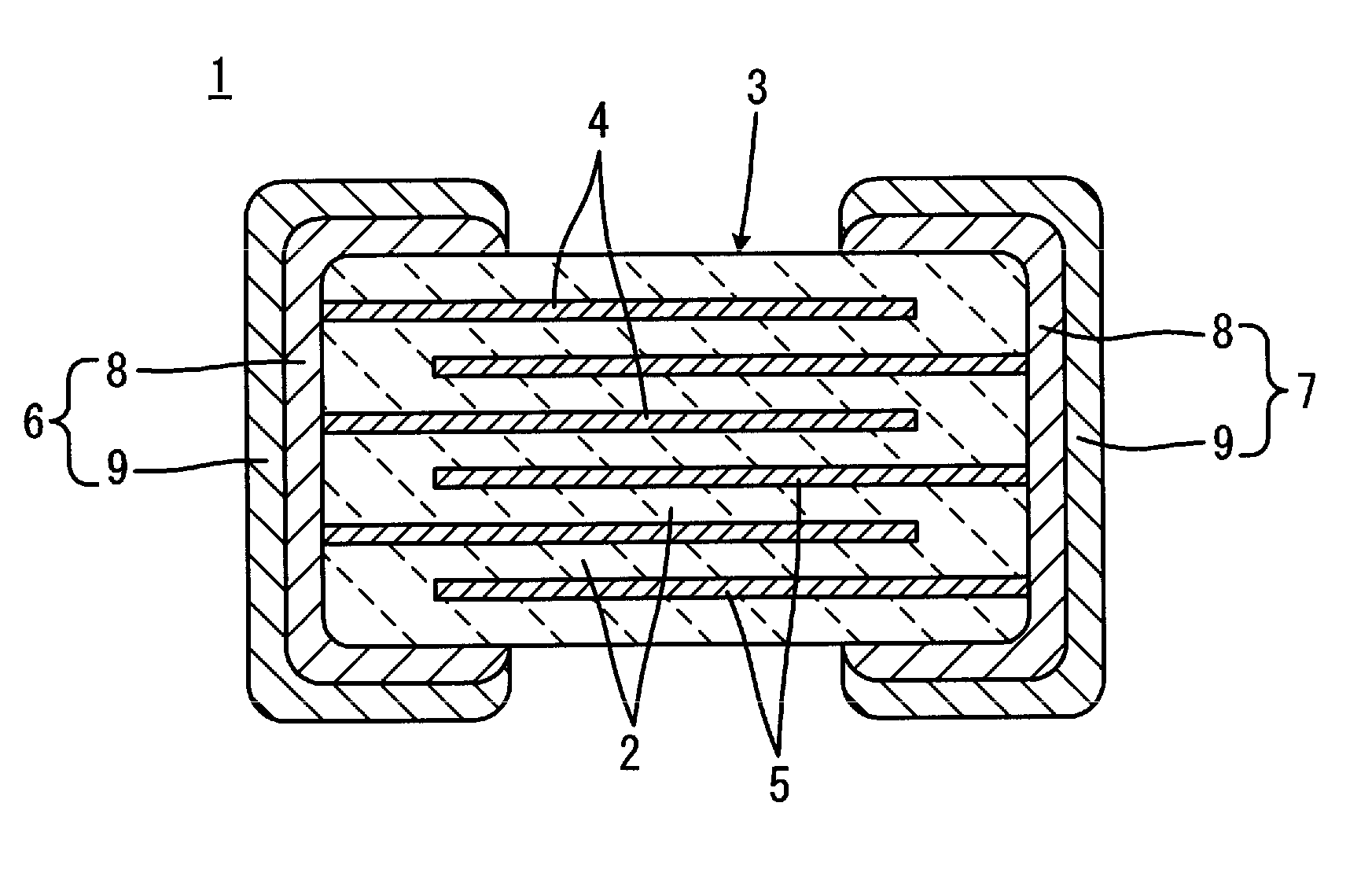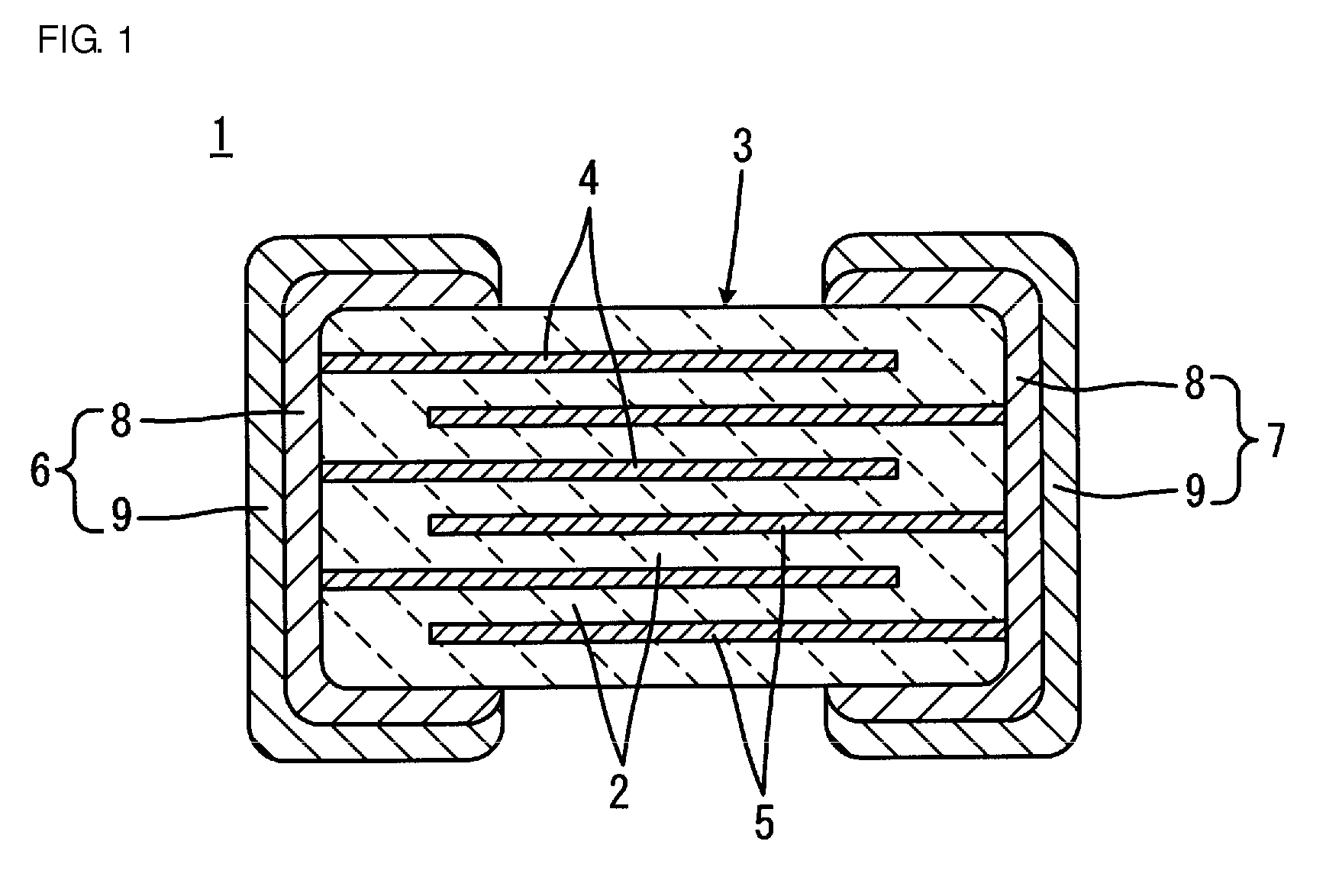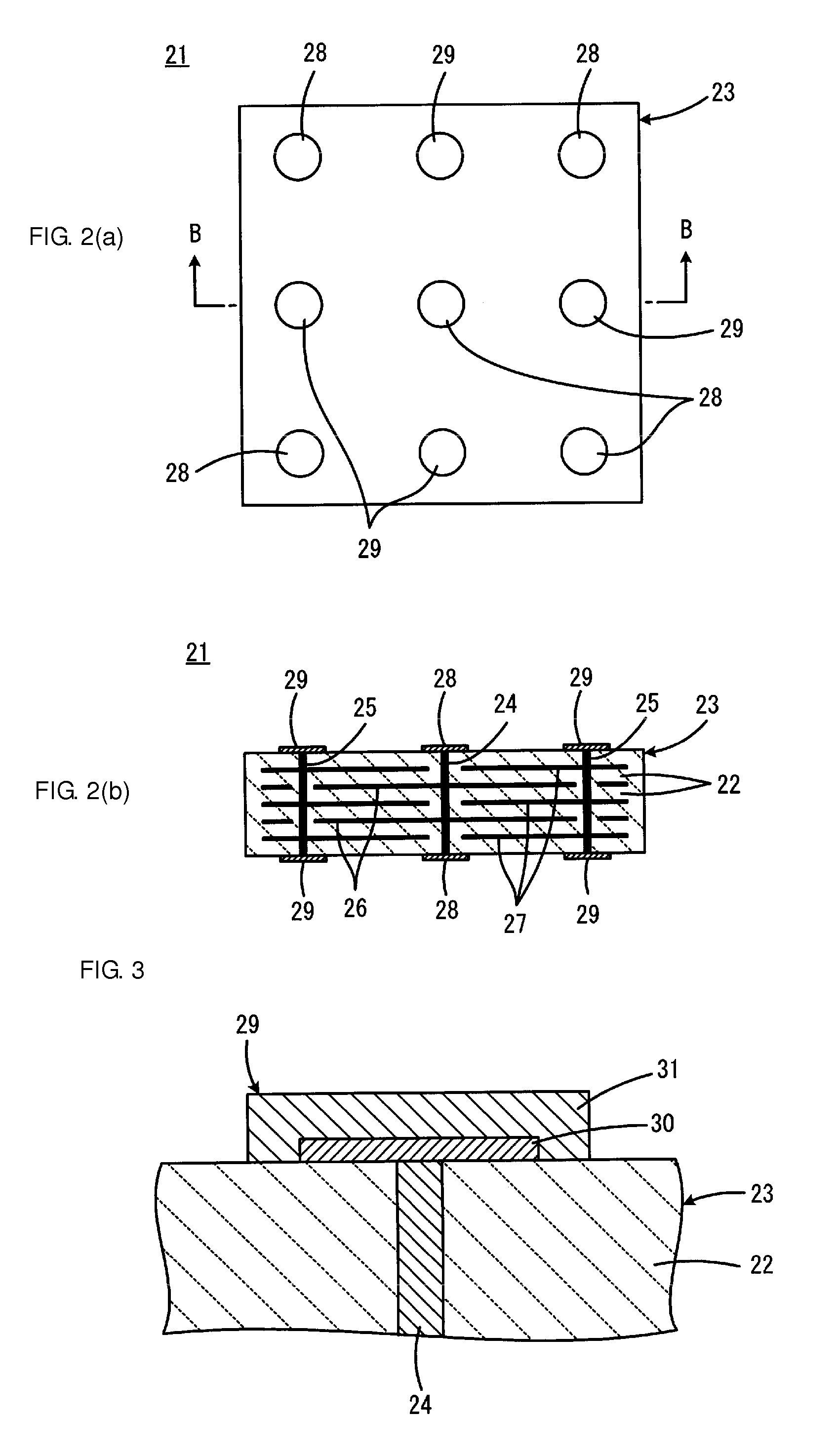Multilayer ceramic capacitor and method for manufacturing the same
a multi-layer ceramic capacitor and ceramic technology, applied in the direction of fixed capacitors, variable capacitors, fixed capacitor details, etc., can solve the problems of inability to suppress, increase the resistance of the lower layer resistance electrode or the resistance of the interface portion in some cases, disadvantageous increase of the impedance, etc., to achieve stable aimed esr value, increase the resistance, and improve the reliability of the multi-layer ceramic capacitor
- Summary
- Abstract
- Description
- Claims
- Application Information
AI Technical Summary
Benefits of technology
Problems solved by technology
Method used
Image
Examples
experimental example 1
[0058]First, by a known method, a ceramic laminate for a multilayer ceramic capacitor was prepared which was designed to contain Ni in internal electrodes and to obtain an electrostatic capacitance of 1 μF.
[0059]In addition, a paste for lower layer resistance electrodes was prepared as described below.
[0060]After an In2O3 powder and a SnO2 powder were mixed together so that the content of the SnO2 powder to the total amount of the In2O3 powder and the SnO2 powder was 5 percent by weight and were then calcined in the air at a temperature of 1,400° C. for 5 hours so that SnO2 was sufficiently solid-solved, a pulverizing treatment was performed until a powder having an average particle diameter of approximately 1 μm was obtained, so that an In—Sn composite oxide powder was obtained.
[0061]In addition, as a first glass, a glass frit composed of a B—Si—Zn—Ba—Ca-based glass, having a softening point shown in “First Glass Softening Point” in Table 1, and having an average particle diameter ...
experimental example 2
[0078]In Experimental Example 2, after multilayer ceramic capacitors of Samples 13 and 14 were formed as shown in Table 2 under conditions similar to those of Samples 4 and 10, respectively, of Experimental Example 1 except that as the second glass contained in the upper layer conductive electrode, a glass was used which was crystallized in a firing step of forming the upper layer conductive electrodes, evaluation similar to that in Experimental Example 1 was performed. The evaluation results are shown in Table 2. In addition, in Table 2, the crystallization start temperature of the second glass of each of Samples 13 and 14 are also shown.
[0079]
TABLE 2Firing Temperature ofSofteningCrystallization StartFiring Temperature ofSampleSoftening PointLower LayerPoint ofTemperature ofUpper LayerESRRate of ChangeNo.of First GlassResistance ElectrodeSecond GlassSecond GlassConductive ElectrodeValuein ESR4560° C.720° C.580° C.—670° C.155 mΩ+3%13560° C.720° C.580° C.650° C.670° C.151 mΩ+0%10620°...
PUM
| Property | Measurement | Unit |
|---|---|---|
| softening point | aaaaa | aaaaa |
| softening point | aaaaa | aaaaa |
| softening point | aaaaa | aaaaa |
Abstract
Description
Claims
Application Information
 Login to View More
Login to View More - R&D
- Intellectual Property
- Life Sciences
- Materials
- Tech Scout
- Unparalleled Data Quality
- Higher Quality Content
- 60% Fewer Hallucinations
Browse by: Latest US Patents, China's latest patents, Technical Efficacy Thesaurus, Application Domain, Technology Topic, Popular Technical Reports.
© 2025 PatSnap. All rights reserved.Legal|Privacy policy|Modern Slavery Act Transparency Statement|Sitemap|About US| Contact US: help@patsnap.com



